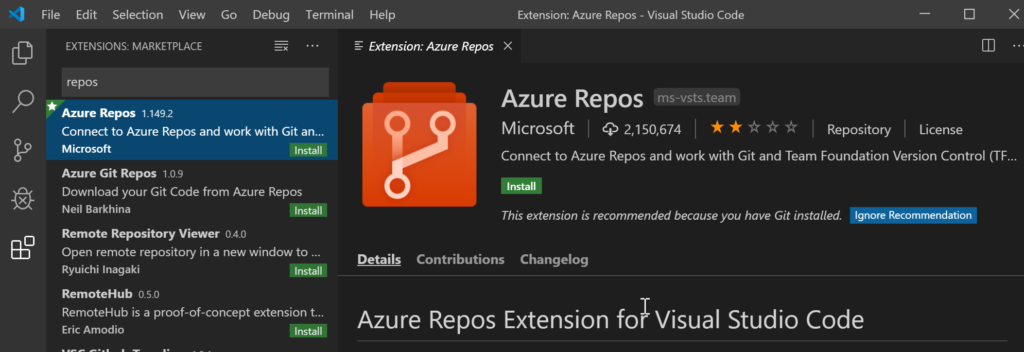

- USE AZURE DEVOPS WITH VISUAL STUDIO 2017 FOR MAC HOW TO
- USE AZURE DEVOPS WITH VISUAL STUDIO 2017 FOR MAC SOFTWARE
- USE AZURE DEVOPS WITH VISUAL STUDIO 2017 FOR MAC CODE
- USE AZURE DEVOPS WITH VISUAL STUDIO 2017 FOR MAC PLUS
- USE AZURE DEVOPS WITH VISUAL STUDIO 2017 FOR MAC DOWNLOAD
You can see that the build is already running.
USE AZURE DEVOPS WITH VISUAL STUDIO 2017 FOR MAC HOW TO
Tip ( Docker for beginners) For more information about how to work with Docker like, pull docker image, run docker image and work with container, see Docker for beginnersĪ build definition is the entity through which you define your automated build process.
USE AZURE DEVOPS WITH VISUAL STUDIO 2017 FOR MAC CODE
Now your project is created into Team Services account (the source code is uploaded, there is a Git Repository and it is generating continuous delivery pipeline automatically).
USE AZURE DEVOPS WITH VISUAL STUDIO 2017 FOR MAC PLUS
Click on the Add this project to source control plus button. New window is displayed Configure Continuous Delivery.Click on the new context menu Configure Continuous Delivery.Go in the Solution Explorer, right click on your web-based project.Team Services is a tool that allows you to build a continuous integration and continuous delivery. In this step you are going to create a project in Team Services and put your project code there without leaving your IDE.
USE AZURE DEVOPS WITH VISUAL STUDIO 2017 FOR MAC DOWNLOAD
*If you don’t have installed Continuous Delivery Tools go to Online Visual Studio Marketplace, search for “Continuous” and download it. From the prompted window, select Continuous Delivery Tools for Visual Studio and click Enable.Go to Tools, choose Extensions and Updates.The tools also allow to improve your code quality and security. The Continuous Delivery Tools for Visual Studio extension makes it simple to automate and stay up to date on your DevOps pipeline for ASP.NET and other projects targeting Azure. In order to use Continuous Delivery Tools for Visual Studio extension you just need to enable it. Tip ( Kubernetes cluster for beginner ) For more information about how to work with Kubernetes cluster and deploy it to Azure Kubernetes Service (AKS) and work with Azure Container Registry, see Kubernetes cluster for beginner
USE AZURE DEVOPS WITH VISUAL STUDIO 2017 FOR MAC SOFTWARE
Otherwise, you can always contact the experts that offer end-to-end DevOps consulting services based on the modern methodologies designed to deliver high-quality software faster. In order to create a CI build and a release pipeline and Release Managementthat is going to deploy the code into Azure, all you need is an existing web based application and an extension from the marketplace. This CI/CD team practice automates the build, testing and deployment of your application, and allows complete traceability in order to see code changes, reviews and test results. On the other hand, using CD you are repeatedly pushing code through a deployment pipeline where it is a built, tested, and deployed afterwards. Using CI, allows you to merge the code changes in order to ensure that those changes work with the existing codebase and allows you to perform testing. This article will demonstrate how to build a complete CI/CD pipeline in Visual Studio and deploy it to Azureusing the new Continuous Delivery Extension for Visual Studio. Step 11: Check if the application is really deployed from Visual Studio into Azure Step 7: Turn on the Continuous Integration (CI) Trigger Step 6: Setting encrypted and none encrypted Variables Step 3: Open the project in Team Services

Step 2: Create a project in Team Services Step1: Enable Continuous Delivery extension for Visual Studio


 0 kommentar(er)
0 kommentar(er)
